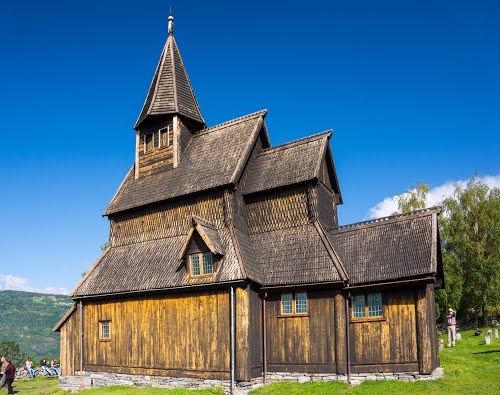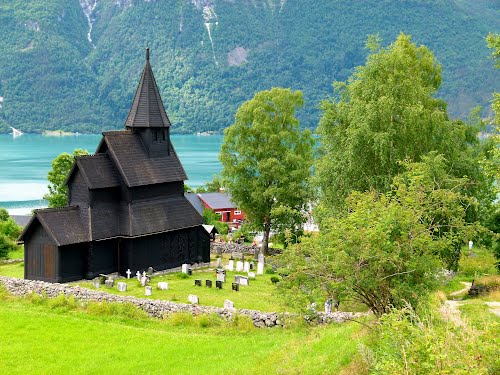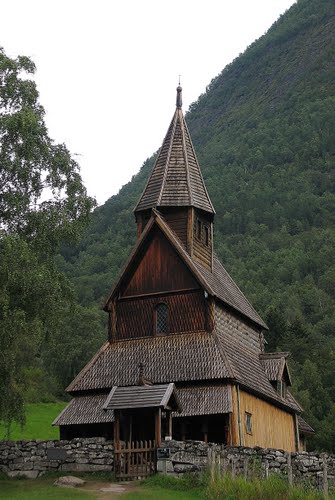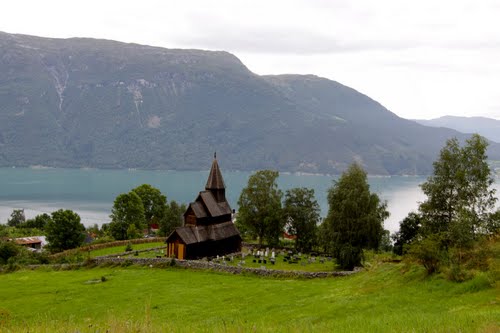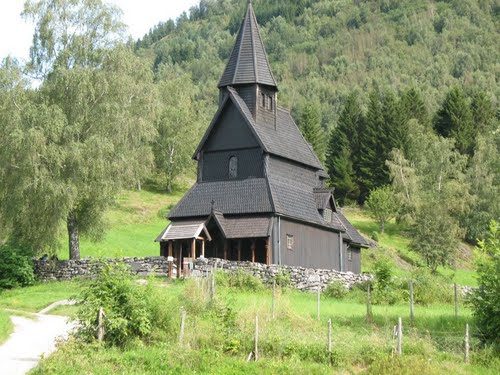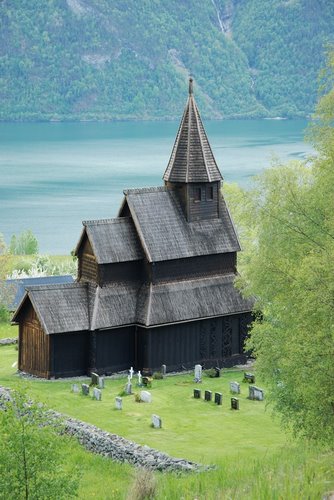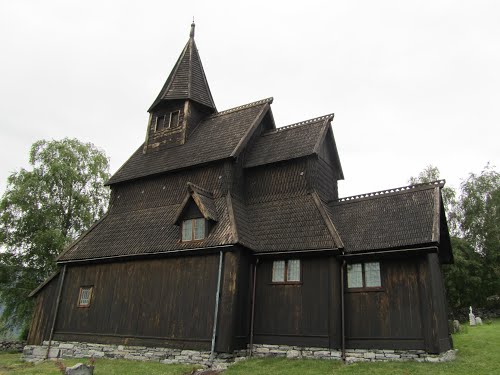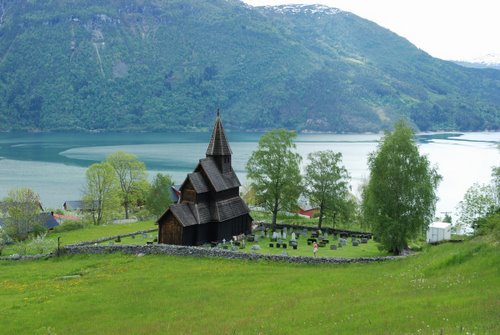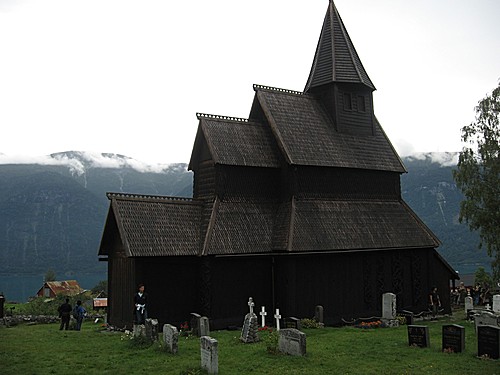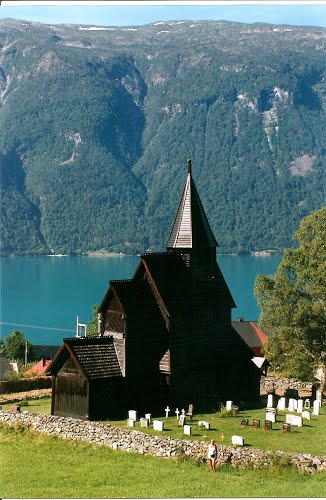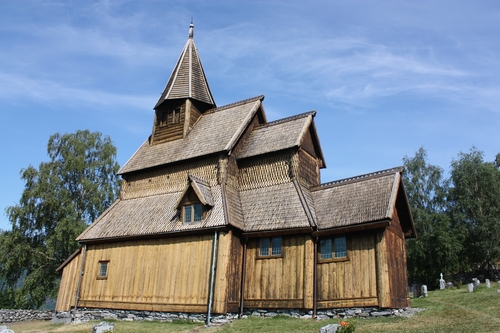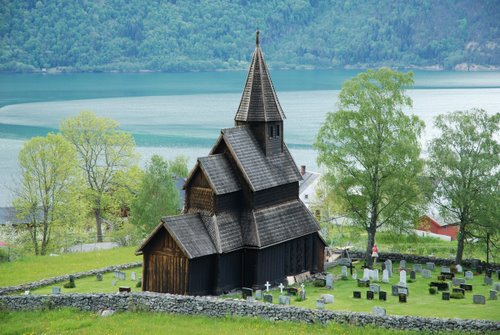Urnes Stave Church is a 12th-century stave church at Ornes, along the Lustrafjorden in the municipality of Luster in Sogn og Fjordane county, Norway. It sits on the eastern side of the fjord, directly across the fjord from the village of Solvorn and about 5 kilometres east of the village of Hafslo.
It has been owned by Fortidsminneforeningen (Society for the Preservation of Norwegian Ancient Monuments) since 1881. In 1979, the Urnes Stave Church was listed as a World Heritage Site by UNESCO.
History
The church was built around 1130 or shortly thereafter, and still stands in its original location; it is believed to be the oldest of its kind. It provides a link between Christian architecture and the architecture and artforms of the Viking Age with typical animal-ornamentation, the so-called "Urnes style" of animal-art.
Archaeological investigations have discovered the remains of three churches on the site prior to the current building. The excavations uncovered holes in the ground from earth-bound posts which had belonged to an early post church, a type of church with walls supported by short sills inserted between free-standing posts. It is not known if this church had a raised roof above the central space of the nave like the present church. The earliest possible dating of this church is the early eleventh century.
In the 17th century the nave of the church, which is a raised central room surrounded by an aisle, was extended southwards. Other elements were also added to the church, including a baptismal font (1640), a wooden canopy above the altar (1665) and a pulpit (1693–1695). The altarpiece, which depicts Christ on the cross with the Virgin Mary and John the Baptist, dates from 1699. Windows were added to the church in the 18th century.
The church has not been in ordinary use since 1881, when the parish of Urnes was abolished, and it became a part of Solvorn parish in the Indre Sogn deanery of the Diocese of Bjorgvin. It is now only used for special occasions in the parish such as baptisms and weddings.

